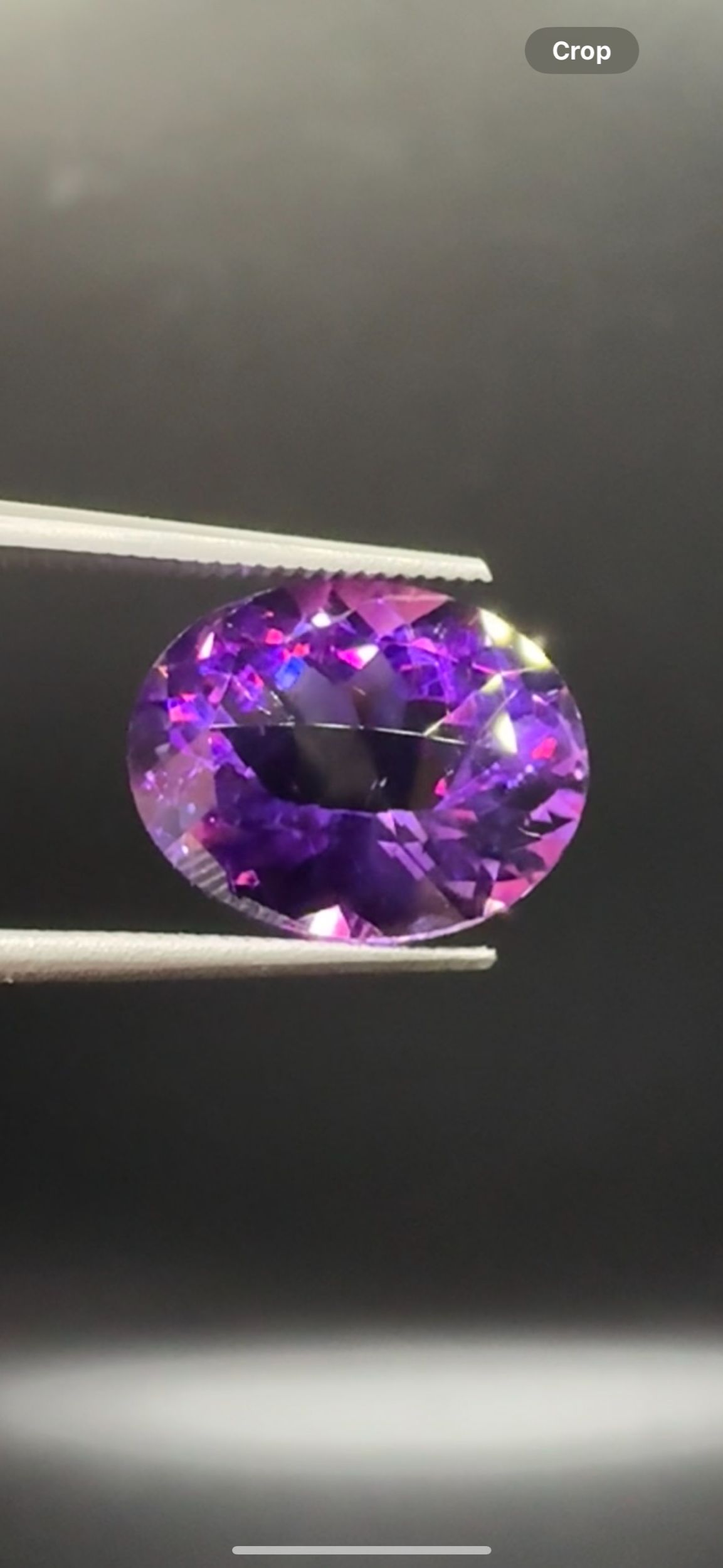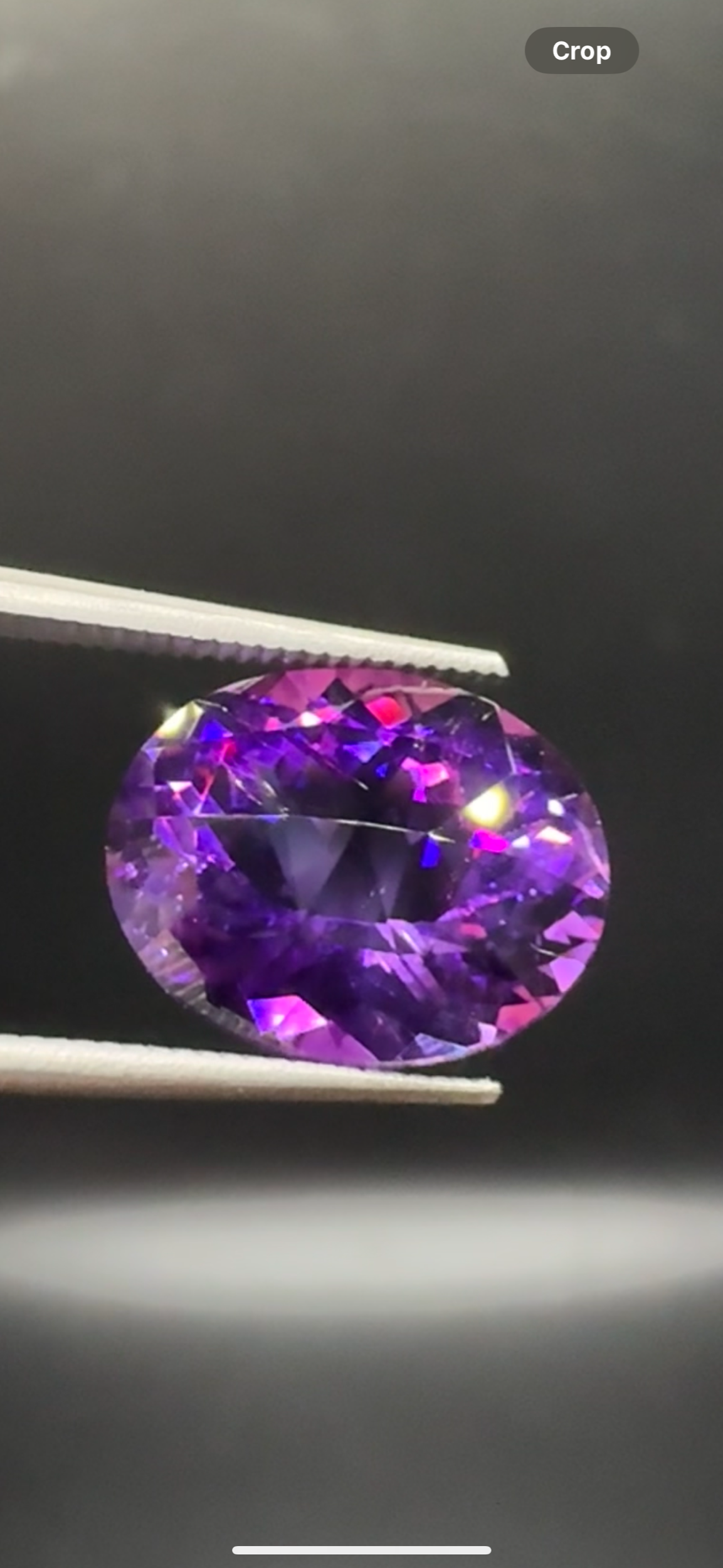

Siberian Amethyst
Siberian Fire from the Moroccan Desert
5.8 Carat Tata Region Amethyst with Hematite Inclusions
This isn’t just amethyst—it’s Tata fire. Sourced from the remote desert mountains of southern Morocco, near the town of Tata, this rare 5.8 carat gem rivals the finest Siberian material in depth, saturation, and internal fire. But what sets it apart even further are the natural hematite inclusions—microscopic flecks of iron oxide suspended inside the crystal, acting like embers trapped in violet ice.
The Tata region lies at the edge of the Anti-Atlas, a geologically complex range formed during the Pan-African orogeny. Over millions of years, hydrothermal fluids rich in silica and iron seeped into fractures in volcanic host rock, creating narrow but rich pockets of amethyst. These hematite-bearing pockets are extremely rare and difficult to access—often found only by small-scale local miners with deep knowledge of the terrain.
What makes this material “Siberian” in quality isn’t just its deep purple tone—it’s the electric red and indigo flashes that appear under the right light, thanks to precise zoning and the interplay of iron and quartz. This optical effect is highly prized in the gem world and seldom found outside Russia, Brazil… and now, quietly, Morocco.
Each piece is a convergence of desert silence, volcanic history, and the quiet work of Moroccan hands.
This is not amethyst for the casual collector—this is for those who know what they’re looking at.
A gemstone born of fire and iron, carrying the pulse of the Earth and the stillness of the desert.
Siberian Fire from the Moroccan Desert
5.8 Carat Tata Region Amethyst with Hematite Inclusions
This isn’t just amethyst—it’s Tata fire. Sourced from the remote desert mountains of southern Morocco, near the town of Tata, this rare 5.8 carat gem rivals the finest Siberian material in depth, saturation, and internal fire. But what sets it apart even further are the natural hematite inclusions—microscopic flecks of iron oxide suspended inside the crystal, acting like embers trapped in violet ice.
The Tata region lies at the edge of the Anti-Atlas, a geologically complex range formed during the Pan-African orogeny. Over millions of years, hydrothermal fluids rich in silica and iron seeped into fractures in volcanic host rock, creating narrow but rich pockets of amethyst. These hematite-bearing pockets are extremely rare and difficult to access—often found only by small-scale local miners with deep knowledge of the terrain.
What makes this material “Siberian” in quality isn’t just its deep purple tone—it’s the electric red and indigo flashes that appear under the right light, thanks to precise zoning and the interplay of iron and quartz. This optical effect is highly prized in the gem world and seldom found outside Russia, Brazil… and now, quietly, Morocco.
Each piece is a convergence of desert silence, volcanic history, and the quiet work of Moroccan hands.
This is not amethyst for the casual collector—this is for those who know what they’re looking at.
A gemstone born of fire and iron, carrying the pulse of the Earth and the stillness of the desert.